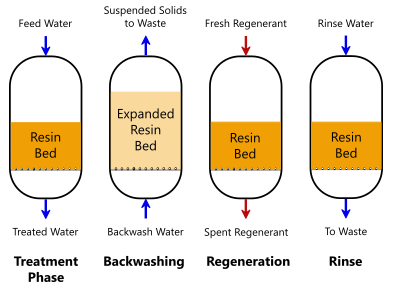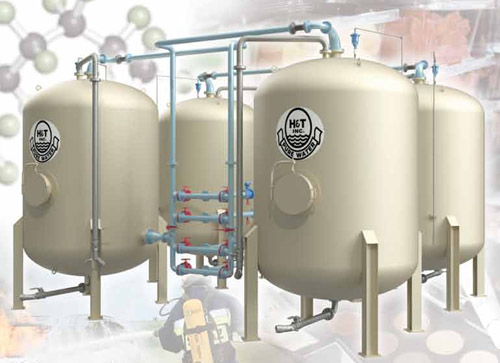Comprehensive PFAS Management Strategies for Contaminated Sites
Comprehensive PFAS Management Strategies for Contaminated Sites
Blog Article
Exactly How PFAS Therapy Guarantees Clean and Lasting Water
The existence of PFAS, generally known as "for life chemicals," presents substantial challenges to water top quality and public health. Advanced therapy modern technologies, including triggered carbon adsorption and membrane layer purification, have actually become effective options to minimize these impurities. By employing these methods, areas can not only attain cleaner water however likewise foster lasting practices that shield communities. Nevertheless, the implications of these therapies extend past immediate wellness advantages; they raise essential inquiries about long-lasting water management strategies that have to be resolved to make certain a durable future. What does this mean for our approach to water sustainability?

Recognizing PFAS Contamination
PFAS, or per- and polyfluoroalkyl substances, have actually become a considerable ecological issue as a result of their prevalent occurrence and persistence in the setting. These artificial chemicals have actually been used in different industrial applications and consumer items, consisting of non-stick kitchenware, water-proof apparel, and food product packaging, because of their one-of-a-kind properties such as water and grease resistance.
The contamination of soil and water sources by PFAS happens largely with industrial discharges, firefighting foam use, and leaching from garbage dumps. pfas management. Once released, these materials are immune to deterioration, causing their buildup in the atmosphere. This persistence raises crucial concerns, as PFAS can take a trip cross countries through groundwater and surface area water systems, impacting alcohol consumption water supplies and environments

Wellness Risks of PFAS
The determination of PFAS in the setting raises considerable health and wellness issues for individuals revealed to these compounds. Understood as "forever chemicals," PFAS do not break down conveniently and can gather in bodies with time. Research has linked PFAS exposure to various negative wellness results, consisting of immune system disorder, liver damages, and increased threat of specific cancers cells - pfas management. Notably, research studies have revealed raised cholesterol degrees and possible influence on reproductive and developmental health and wellness, particularly in expectant individuals and infants.
The ubiquity of PFAS in consumer products, such as non-stick kitchenware, water-repellent fabrics, and food product packaging, additional enhances the danger of direct exposure. Drinking water polluted with PFAS is a considerable issue, as these chemicals can seep into groundwater resources. Susceptible populaces, including youngsters and those living near commercial websites, might encounter heightened threats as a result of their establishing systems and possible for greater direct exposure degrees.
As recognition of these health threats remains to expand, regulative companies are starting to develop standards for PFAS degrees in alcohol consumption water. Public wellness initiatives are vital to alleviate exposure and safeguard neighborhoods from the lasting results of these harmful materials.

Innovative Therapy Technologies
How can we efficiently deal with the difficulties presented by PFAS contamination in water resources? Ingenious treatment technologies are emerging as crucial services in the pursuit for clean water. These techniques focus on the removal or destruction of per- and polyfluoroalkyl materials (PFAS), which are infamous for their perseverance in the environment.
One encouraging approach is adsorption using innovative materials, such as activated carbon and ion exchange materials. These products have shown efficiency in capturing PFAS molecules from water. Another notable technology is membrane important link layer filtration, which makes use of nanofiltration and turn around osmosis to different impurities at the molecular level, thus supplying a barrier against PFAS.
Additionally, advanced oxidation procedures (AOPs) utilize solid oxidants to break down PFAS substances into safe by-products. This approach is particularly efficient for dealing with highly polluted water sources. Bioremediation methods, employing particular microorganisms, are also being explored to degrade PFAS.
As research study proceeds, crossbreed systems that integrate several technologies may supply enhanced performance, addressing the intricacies of PFAS contamination. The development and application of these ingenious therapy technologies are necessary steps toward making sure the safety and security and sustainability of our water sources.
Advantages of Efficient PFAS Treatment
Successfully treating PFAS contamination in water sources considerably enhances public health and navigate to these guys ecological security. PFAS, frequently referred to as "forever chemicals," are immune to degradation and can collect in the human body, bring about major wellness risks such as cancer cells, liver damage, and immune system disorder. By implementing effective treatment techniques, communities can decrease exposure to these unsafe materials, ultimately improving the health and wellness outcomes of their populations.
Additionally, effective PFAS treatment contributes to the preservation of neighborhood communities. Polluted water can negatively affect marine life and disrupt the fragile balance of regional environments. By making sure tidy water, treatment processes safeguard biodiversity and preserve environmental stability.
Additionally, effective PFAS removal can foster public confidence in water quality. When communities are assured that their drinking water is devoid of harmful impurities, it advertises a feeling of security and wellness. This depend on is essential for neighborhood involvement and assistance for continuous water management initiatives.
Future of Water Sustainability
Amidst growing worries regarding water high quality and deficiency, the future of water sustainability rests on ingenious strategies and collective efforts. As communities deal with the impending threats of impurities like PFAS, the advancement of innovative treatment modern technologies is vital. These technologies not only concentrate on the removal of unsafe compounds yet likewise promote the reuse and recycling of water, thereby decreasing total need.
In addition, efficient water click to investigate administration plays a critical duty in ensuring sustainable methods. Policymakers need to integrate clinical research with regulative frameworks to establish clear guidelines for water use and therapy. Stakeholder interaction, including local areas and markets, promotes a feeling of shared obligation and urges sustainable practices across various sectors.
Investment in infrastructure is also crucial; upgrading aging systems to incorporate modern purification and filtration methods can substantially boost water quality. In addition, embracing green modern technologies, such as natural filtration systems, can offer environmentally friendly options.
Inevitably, the future of water sustainability exists in a holistic technique that incorporates technology, policy, and neighborhood involvement. By prioritizing these components, we can secure our water sources for generations to find, ensuring clean and sustainable water for all.
Verdict
To conclude, the reliable therapy of PFAS is crucial for guaranteeing clean and sustainable water. By utilizing advanced technologies such as turned on carbon adsorption, membrane layer filtering, and progressed oxidation processes, areas can dramatically reduce the wellness threats connected with these contaminants. Additionally, the assimilation of these therapy approaches sustains community protection and improves biodiversity. Ultimately, robust PFAS treatment methods add to lasting resilience in water monitoring, promoting public rely on water top quality and advertising sustainable practices.
Report this page